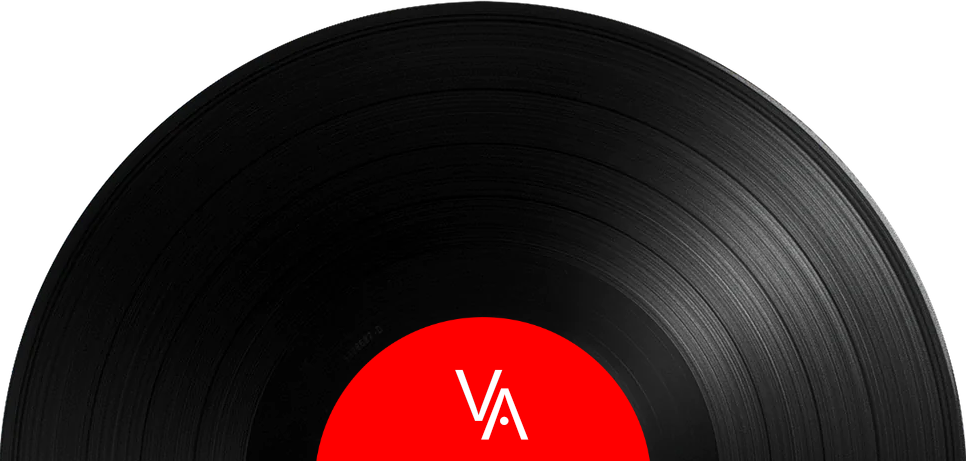
I am a HUGE Blue Mitchell fan. My dessert island jazz go-to list of musicians would feature Mitchell prominently, along with Lee Morgan and Gerry Mulligan. What these tremendously talented musicians share is a wonderfully upbeat and melodic approach that doesn't require a PhD in jazz to appreciate. It just sounds good - and this pressing sounds astonishingly good. It's part of the Blue Note Tone Poet reissue series (I now have 75 Tone Poets in my collection) and, like every other Tone Poet I've heard, it's first class all the way. It's entirely analogue, sourced from the original Blue Note analogue tapes, and a genuine pleasure to listen to. It's a mood-changer, if you need one.
Born Richard Allen Mitchell, in 1930, he was gifted the nickname "Blue" by his brother. I'm not sure why, but it was when he was in high school and - since he didn't take up the trumpet until age 17 - it most likely had something to do with music.
Mitchell started playing just as bebop was coming into vogue, and quickly became infatuated with the music of Charley Parker, John Coltrane and Dizzy Gillespie, whose influences are evident in his playing but not at all overstated. Mitchell was able to use what influenced him as a stepping stone to reach his own style, which would become an influence to another generation of players.
Mitchell was soon playing with other musicians, most notably Horace Silver. Over the course of his career he would appear on several different labels and record 28 albums as a leader. In addition, he appeared on something like 100 other recordings as a sideman, playing with virtually all of the jazz giants, including an up-and-coming pianist named Chick Corea. He also played with such non-jazz musicians as Ray Charles and British blues guitarist, John Mayall. This is not that surprising, as Mitchell's music does exhibit a blues influence, and - after all - jazz and blues are related. Same father, maybe a different mother.
When he made his first recording (with saxophonist Lou Donaldson), Mitchell had only been playing the trumpet for 5 years! Cannonball Adderley, recognizing his enormous talent, helped secure his first recording deal with the Riverside label in 1958. Mitchell was the leader on the eight albums he recorded for Riverside, many of them featuring Wynton Kelly on piano. He was also member of Horace Silver's quintet until Silver disbanded the group in 1964, after which Mitchell immediately enlisted two of its newly-unemployed members - Junior Cook (tenor sax) and Gene Taylor (bass) - as well as Al Foster, (drums) and Chick Corea, to form a new band. There were a few personnel changes over time, resulting in the addition of Harold Mabern, who replaced Corea on piano, and Billy Higgins, who supplanted Foster on drums. It is this quintet - Mitchell, Mabern, Cook, Higgins and Taylor - who appear on this record, which they recorded for Blue Note.
Mitchell and Cook became one the most enduring and respected horn partnerships in jazz. They sound as though they are meant to play with each other, each of them weaving seamlessly in and out of the music like threads holding everything together. I don't think there's another horn pairing in jazz quite like these two. Cook very much respected Mitchell, and said he was a "very warm, lyrical and melodic player. He was technically precise, had a beautiful tone and expressive quality like Miles Davis's, warmth and great feeling." I'm certain the respect was returned by Mitchell.
After his stint on Blue Note, Mitchell went to Liberty Records and then to the Mainstream label, where he tried to add some funk to his sound, probably in an effort to stay relevant to the times. But it didn't work. The records sound cheezy, like the soundtrack to a 1970's detective show. The Mainstream releases are nothing at all like this record - or any of the other of the classic records Mitchell cut for Blue Note - which in my opinion are some of the best jazz recordings of that era.
In 1975 Mitchell formed what would be his last ensemble, with saxophonist Harold Land. This group recorded the LP, Mapenzi, for the Concord label, in 1978, and it's a pretty great, albeit very much overlooked, recording.
And that would have to do, because Mitchell died not even a year later, in May, 1979, aged just 49.
This is a stereo pressing, although I believe it also exists in mono. But I don't care about that because I'm only concerned here with the records in my collection, and if a mono version of this record exists I don't own it. Mitchell's unique style of playing is immediately apparent from the very first note of the title track (one of two Jimmy Heath-penned tunes) that kicks off side one. I can immediately hear the influence of Charlie Parker, John Coltrane and others, but Mitchell manages to incorporate those influences into something new and refreshing, which is what the very best musicians are all somehow able to do. Track two is Blues 3-For-1, and it is pure bop through-and-through. Higgins' deft abilities on the drums allow the song to really swing, and Mabern's piano work is wonderful.
The rest of the album is just as good. The separation between instruments - along with the spaciousness and all the subtle details that only an excellent analogue recording can exhibit - combine to make this record a masterpiece. One of my favourite cuts is Portrait of Jennie, a somewhat melancholy ballad composed by Gordon Budge and Russel Robinson. I'll single that one out, but I'm a sucker for a really good ballad but, honestly, there really isn't a bum track anywhere on this record.
This grouping of musicians is an excellent coming together of talents. They have created a record that is sweet, warm and endearing. It's a happy record, definitely a triumph of taste and style, and also …

I am a HUGE Blue Mitchell fan. My dessert island jazz go-to list of musicians would feature Mitchell prominently, along with Lee Morgan and Gerry Mulligan. What these tremendously talented musicians share is a wonderfully upbeat and melodic approach that doesn't require a PhD in jazz to appreciate. It just sounds good - and this pressing sounds astonishingly good. It's part of the Blue Note Tone Poet reissue series (I now have 75 Tone Poets in my collection) and, like every other Tone Poet I've heard, it's first class all the way. It's entirely analogue, sourced from the original Blue Note analogue tapes, and a genuine pleasure to listen to. It's a mood-changer, if you need one.
Born Richard Allen Mitchell, in 1930, he was gifted the nickname "Blue" by his brother. I'm not sure why, but it was when he was in high school and - since he didn't take up the trumpet until age 17 - it most likely had something to do with music.
Mitchell started playing just as bebop was coming into vogue, and quickly became infatuated with the music of Charley Parker, John Coltrane and Dizzy Gillespie, whose influences are evident in his playing but not at all overstated. Mitchell was able to use what influenced him as a stepping stone to reach his own style, which would become an influence to another generation of players.
Mitchell was soon playing with other musicians, most notably Horace Silver. Over the course of his career he would appear on several different labels and record 28 albums as a leader. In addition, he appeared on something like 100 other recordings as a sideman, playing with virtually all of the jazz giants, including an up-and-coming pianist named Chick Corea. He also played with such non-jazz musicians as Ray Charles and British blues guitarist, John Mayall. This is not that surprising, as Mitchell's music does exhibit a blues influence, and - after all - jazz and blues are related. Same father, maybe a different mother.
When he made his first recording (with saxophonist Lou Donaldson), Mitchell had only been playing the trumpet for 5 years! Cannonball Adderley, recognizing his enormous talent, helped secure his first recording deal with the Riverside label in 1958. Mitchell was the leader on the eight albums he recorded for Riverside, many of them featuring Wynton Kelly on piano. He was also member of Horace Silver's quintet until Silver disbanded the group in 1964, after which Mitchell immediately enlisted two of its newly-unemployed members - Junior Cook (tenor sax) and Gene Taylor (bass) - as well as Al Foster, (drums) and Chick Corea, to form a new band. There were a few personnel changes over time, resulting in the addition of Harold Mabern, who replaced Corea on piano, and Billy Higgins, who supplanted Foster on drums. It is this quintet - Mitchell, Mabern, Cook, Higgins and Taylor - who appear on this record, which they recorded for Blue Note.
Mitchell and Cook became one the most enduring and respected horn partnerships in jazz. They sound as though they are meant to play with each other, each of them weaving seamlessly in and out of the music like threads holding everything together. I don't think there's another horn pairing in jazz quite like these two. Cook very much respected Mitchell, and said he was a "very warm, lyrical and melodic player. He was technically precise, had a beautiful tone and expressive quality like Miles Davis's, warmth and great feeling." I'm certain the respect was returned by Mitchell.
After his stint on Blue Note, Mitchell went to Liberty Records and then to the Mainstream label, where he tried to add some funk to his sound, probably in an effort to stay relevant to the times. But it didn't work. The records sound cheezy, like the soundtrack to a 1970's detective show. The Mainstream releases are nothing at all like this record - or any of the other of the classic records Mitchell cut for Blue Note - which in my opinion are some of the best jazz recordings of that era.
In 1975 Mitchell formed what would be his last ensemble, with saxophonist Harold Land. This group recorded the LP, Mapenzi, for the Concord label, in 1978, and it's a pretty great, albeit very much overlooked, recording.
And that would have to do, because Mitchell died not even a year later, in May, 1979, aged just 49.
This is a stereo pressing, although I believe it also exists in mono. But I don't care about that because I'm only concerned here with the records in my collection, and if a mono version of this record exists I don't own it. Mitchell's unique style of playing is immediately apparent from the very first note of the title track (one of two Jimmy Heath-penned tunes) that kicks off side one. I can immediately hear the influence of Charlie Parker, John Coltrane and others, but Mitchell manages to incorporate those influences into something new and refreshing, which is what the very best musicians are all somehow able to do. Track two is Blues 3-For-1, and it is pure bop through-and-through. Higgins' deft abilities on the drums allow the song to really swing, and Mabern's piano work is wonderful.
The rest of the album is just as good. The separation between instruments - along with the spaciousness and all the subtle details that only an excellent analogue recording can exhibit - combine to make this record a masterpiece. One of my favourite cuts is Portrait of Jennie, a somewhat melancholy ballad composed by Gordon Budge and Russel Robinson. I'll single that one out, but I'm a sucker for a really good ballad but, honestly, there really isn't a bum track anywhere on this record.
This grouping of musicians is an excellent coming together of talents. They have created a record that is sweet, warm and endearing. It's a happy record, definitely a triumph of taste and style, and also …




